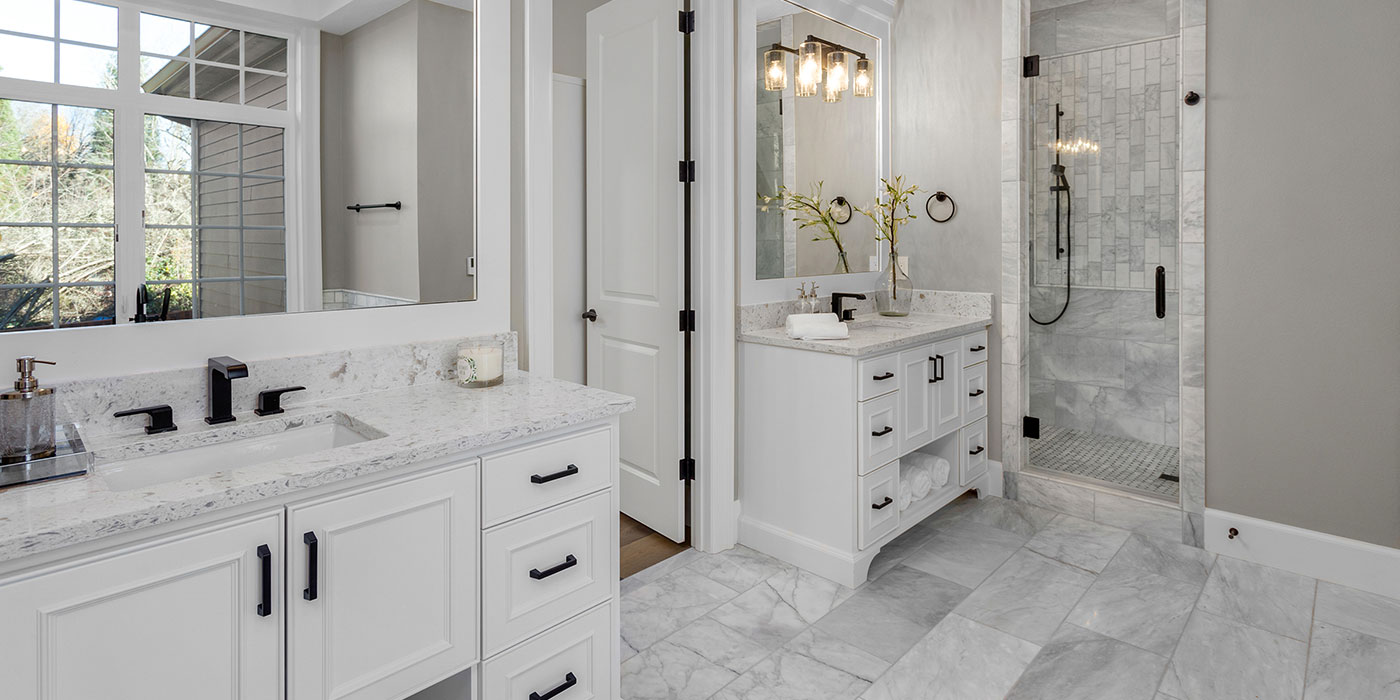A budget-friendly way to change the look of your kitchen is with a coat of paint on your existing cabinets. Keep in mind that this change takes a lot of work and can disrupt your kitchen for a couple of weeks. Careful preparation is super important for a professional looking finish. Follow these steps and don’t hesitate to consult with a TIMBER MART Paint Specialist if you have questions.
1. Cabinet material
Wood or MDF cabinets can be painted with no issues. Cabinets covered in plastic laminate or rigid thermofoil with a glossy surface are not good candidates.
2. Prep the surface
Start with a thorough cleaning with soap and water to remove dried food and grime. Next, clean your cabinet doors and cabinet frames with TSP on every finished side. TSP (tri-sodium phosphate) is an industrial degreaser and will remove built-up cooking grease. Even if you think your cabinets are clean, wipe them down with TSP. Failing to de-grease your cabinets will result in paint not sticking to the surface.
3. Repair
Use wood filler to repair any cracks or chips. If you are replacing your old knobs and hinges with new hardware that have different hole patterns, now is the time to fill the old holes.
4. Sand
Sand any wood filler repairs with medium grit sandpaper and finish with fine grit sand paper. Next, scuff up every finished surface with medium grit sandpaper. The goal is to take the shine off so that the primer sticks better. Once sanding is finished, vacuum every surface and use a damp microfibre cloth to remove any remaining dust.
5. Remove doors and drawers
For best results, remove the cabinet doors and drawers and work on them in a separate area. Some people like to remove the doors and drawers at the very beginning but it is easier to leave everything in place until you are ready to apply primer. Number your doors and drawers so they go back to the same spot when done.
6. Painter’s tape
Mask off areas around the cabinet frames that you don’t want to paint. Use a good painter’s tape so you don’t have paint seepage.
7. Prime
Don’t skip this step. A good primer will make for better paint adhesion and a more professional finish. Use a good quality brush to get into corners and detailed areas. Use a mini sponge roller for large areas. On the cabinet frames, work from the inside out. For the doors, let one side completely dry before you paint the other side. Remember, primer doesn’t have to look perfect but it should be applied smoothly.
8. Sand again
After the primer dries, lightly sand away bumps and ridges using very fine grit sandpaper. Vacuum surface and wipe down with damp micofibre cloth.
9. First coat of paint
Apply paint the same way as the primer. Use a good quality brush and a sponge roller or a paint sprayer. For the doors, paint the backs first and when dry, flip over and paint the fronts. Be sure to wait at least 24 hours before you flip the cabinet doors. Do not rush and let the paint completely cure. Go by the manufacturer recommendations for recoat time.
10. Sand one more time
After the paint dries, lightly sand away bumps and ridges using very fine grit sandpaper. Vacuum surface and wipe down with damp micofibre cloth.
11. Second coat of paint
Apply a second coat of paint the same way you applied the first coat and let completely dry.
12. Reassemble cabinets
Wait at least 24 hours before reinstalling the cabinet doors and drawers. If possible, wait several days so the paint has a chance to cure and harden and can’t be smudged. Once everything is back in place, it will take about a month for the paint to completely cure. The curing time will be listed on the paint label.
If you have any questions or need expert advice, your local TIMBER MART Paint Specialists are here to help. We’ve got everything you need—from high-quality paints and primers to the right tools and tips—to ensure your project is a success.



